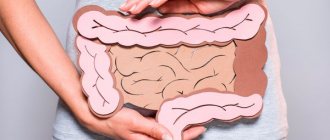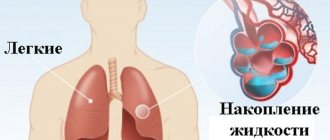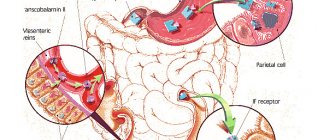Experts believe that one of the main causes of constipation in older people is a general decrease in muscle tone. Over the years, all muscle groups, including the smooth muscles of the intestines, which are responsible for the advancement of the food bolus, are less able to withstand the load. Therefore, to normalize digestion in adulthood, it is very important to maintain muscle tone. Exhaustive training is unnecessary and even dangerous. According to doctors, after 50 years, it is not the intensity of exercise that becomes more important, but its regularity.
Content
- Types of constipation in adults
- Therapeutic exercises to improve bowel function
- Types of exercises
How to deal with constipation? Advertising offers a variety of laxatives - syrups, “sweets”, teas, etc. But their use is not always justified and is not as safe as it seems. Especially for children. As a rule, a laxative does not fight the cause of constipation, but the effect. This means that the intestines will get used to being lazy and you will literally have to “live on laxatives.” Special physical exercises that are suitable for both adults and children from four years of age will help to activate peristalsis and normalize intestinal tone, and at the same time strengthen the abdominal muscles. Children can perform gymnastics independently, with the help of adults.
How does exercise help with constipation?
The longer stool remains in the body, the more dehydrated it becomes. Hard, dry stool is difficult to evacuate.
Exercise helps stimulate peristalsis, pushing food through the colon faster. This reduces the amount of water the body absorbs from stool.
Aerobic exercise also increases your breathing and heart rate. This also helps stimulate the natural contraction of muscles in the intestines. Intestinal muscles that contract better will expel stool faster.1
Types of constipation in adults
Constipation can be atonic or spastic, depending on the cause. Atonic constipation occurs due to weakening of the muscles of the intestinal walls and insufficient peristalsis. Figuratively speaking, the intestines do not have enough strength to remove their contents. This problem can develop after abdominal surgery, due to the effects of general anesthesia, as well as with a sedentary lifestyle. Symptoms of the atonic form are dense, profuse stools, painful bowel movements. In the spastic form, intestinal motility is impaired. In some of its areas, muscle spasm occurs, and the intestinal contents cannot move further. A characteristic symptom is hard stool in small lumps. In this case, swelling may occur. The patient has a feeling that the intestines are not completely emptied.
About the causes of constipation without hesitation
You may be surprised, but about people who are kind, cheerful, with a good complexion and an easy attitude to life, you can definitely say that they do not have this problem.
But for those who walk around looking dissatisfied or unhappy, with problem skin and excess weight, the doctor would like to ask if everything is in order with the functioning of the digestive tract?
Today we are talking about constipation, which is one of the leading modern diseases of civilization. This problem faces most of us.
Test yourself for predisposition
to constipation: – sedentary behavior due to sedentary work; – eating “on the run” - fast food, fatty and high-calorie foods; – frequent nervous overstrain, irregular working hours.
Checked two or more boxes? Prepare for health problems, including constipation. After all, we are moving further and further from physical work to an office chair in front of a computer, from movement in the fresh air to travel by transport, from simple healthy food to surrogates of artificial food additives, often eaten “on the run.” As a result, humanity is getting new health problems: excess weight, osteochondrosis, weak muscles and digestive disorders.
Definition of constipation
First, let's clarify what is considered constipation.
Constipation is defined as irregular bowel movements, less than once every 3-4 days, for more than 10 days. In other words, the normal frequency of bowel movements is considered to be defecation at least 2-3 times a week. The frequency of stool varies and depends both on the quality and quantity of food and on the state of the nervous system.
Other signs of constipation are difficulty experiencing bowel movements due to dense, dry stool, which injures the walls of the rectum, sometimes causing bleeding. If you have to strain for a long time and forcefully to have a bowel movement, this is also called constipation.
What should be normal?
During night sleep, all the food eaten during the day, digested in the stomach and small intestine, is transported to the large intestine with the help of smooth muscles. When a person wakes up in the morning, he gets out of bed, which in an upright position creates pressure from feces on the ampulla of the rectum, causing irritation of the nerve endings in the mucous membrane, which leads to the formation of the urge to defecate. Breakfast also contributes to this, since the entry of food into the stomach increases intestinal peristalsis. And this is another reason to have breakfast! If you do not ignore the urge, then a timely normal bowel movement will occur, bringing lightness for the entire coming day.
In this regard, it is important for young people to know that, according to the observations of doctors, a person who was not used to defecating before 12 o’clock in the morning in his youth, who ignored the urge to defecate, for example, due to the rush to work or waking up late, has Over time, the sensitivity of rectal receptors decreases and the likelihood of suffering from constipation increases with age.
Therapeutic exercises to improve bowel function
The proposed set of exercises helps with both atonic and spastic constipation. To achieve a positive effect, gymnastics should be performed regularly, gradually increasing the load: during the first month of classes, perform the exercises 3-5 times, then from 5 to 10 times. It is better to do gymnastics at the same time, on an empty stomach - for example, in the morning.
If the exercises cause discomfort (severe pain in the intestines, bloating, rapid heartbeat, nausea), then the course should be temporarily stopped and consult a doctor.
Perform the exercises slowly, combined with proper breathing, without sudden jerks. Watch your body position! Adults must show children the correct execution and control the process of gymnastics.
Contraindications for performing gymnastics are fever, ulcerative colitis, intestinal pain, diarrhea, and concomitant diseases in the acute stage.
Preparing for a massage for a child
Before performing a abdominal massage, it is necessary to create all the conditions for its implementation so that the undressed baby does not freeze and feels comfortable.
- There should be no drafts in the room.
- The optimal indoor air temperature is 23 °C.
- Abdominal massage for constipation should be carried out on a hard surface, for example on a changing table or sofa, where you should first lay a blanket or terry towel, and an oilcloth on top.
- Tummy massage should be done using emollients (baby oil or milk), which make it easier for your hands to glide over the baby's skin.
- Before the procedure, you need to wash your hands and, if necessary, warm them in hot water. The child will not like the touch of cold fingers, and the session will not be beneficial.
Up to contents
Types of exercises
Lying on your back
1. Place your hands on your stomach and inhale deeply, pushing it out. As you exhale, draw in your stomach and lightly press on it with your hands.
2. As you inhale, move your hands behind your head and stretch, while simultaneously drawing in your stomach. As you exhale, lower your arms along your body.
3. Alternately bend your knees without lifting your heels from the surface (sliding your feet along the surface).
4. As you exhale, bend your left leg and stretch your knee towards your stomach. Don't help yourself with your hands! Lower your leg and inhale.
5. Repeat the same for the right leg.
6. Repeat the same for both legs at the same time.
7. Bend your knees without lifting your heels off the surface. Then swing your legs left and right.
8. The same, but lifting the heels off the surface.
9. Bend your legs. As you exhale, lift your pelvis off the surface, resting on your shoulder blades and feet. With a sigh, lower your pelvis.
10. Inhale. As you exhale, perform 3-5 circular “bicycle” movements.
11. Inhale. As you exhale, perform 3-4 scissor movements, crossing your straight legs.
12. Inhale. Extend your arms to the sides. As you exhale, rotate your upper body, touching your right hand to your left hand and vice versa. Try to keep only the upper torso off the floor and keep your pelvis in place.
Lying on your right side
13. Right hand under the head, left hand on the stomach, legs bent at the knees. As you inhale, push your stomach out, and as you exhale, pull it in, helping with your hand.
14. As you inhale, straighten your left leg and stretch your arm forward, above your head. As you exhale, pull your knee toward your chest, helping with your hand.
Lying on your left side
15. Repeat exercises 13 and 14, changing the supporting hand.
Lying on your stomach
16. Hands under shoulders. Without lifting your hands from the floor, first get on all fours and then roll onto your feet. Return to starting position.
17. Perform alternating leg swings: while inhaling, lift the leg, while exhaling, lower it.
18. As you inhale, push your stomach out, and as you exhale, pull it in.
Eliminate constipation
Eliminating the problem of constipation should be carried out using comprehensive measures. This includes increasing physical activity, adjusting your diet, and drinking enough fluids. Correction of drug therapy that the patient takes for other diseases, etc.
Breathing exercises also have a good effect. It helps keep the abdominal muscles toned and stimulates intestinal peristalsis. We offer the following set of exercises, which can be performed independently at home and even with bedridden patients who are accessible to contact.
Self-massage
It is advisable to combine strength training and massage elements. It will help improve the functioning of the entire gastrointestinal tract. The movements are simple; no special skills are required to perform them. It is better to do self-massage in the morning. It consists of the following elements:
- stroke the stomach in a clockwise circular motion;
- stretch your feet. You can use a massager;
- massage your fingers;
- using a damp cloth, stroke the stomach from bottom to top.
Contraindications
It is better to avoid training if you feel unwell. You should not use gymnastics without consulting a doctor in the following conditions:
- Pregnancy;
- Menstruation;
- Ulcer during exacerbation;
- Umbilical hernia;
- Hypertension;
- Internal bleeding.
Properly selected and correctly performed physical exercises will not harm anyone. And for them to bring maximum benefit, it is better to combine training with proper nutrition and other physical activities: dancing, yoga and swimming.
The benefits of exercise therapy
Exercise for constipation is a safe remedy that is suitable for people of all ages. After their regular use, people note the following improvements:
- General health promotion;
- Reducing psycho-emotional tension;
- Improved mood;
- Strengthening the nervous system;
- Restoring proper bowel function.
Note!
Long-term use of laxatives worsens intestinal function by reducing intestinal motility.
With the help of gymnastics for constipation, the intestines are “massaged”, which stimulates the following processes:
- Improved towing capacity. With its help, food “passes” to the exit faster.
- Correction of peristalsis. Food remains do not settle on the intestinal walls.
Additional benefits of gymnastics for constipation include the following factors:
- Safety – well-chosen exercises will not harm anyone;
- Accessibility – you can train at home, in the park or on a picnic in the forest;
- Variability - people of all age groups and health conditions can choose the right complex.
However, good results from therapeutic exercises can only be achieved with regular exercise. By performing each exercise 15-20 times daily, you will get rid of constipation forever.
Diet
What can you give your child for constipation?
This question interests many parents. The fight against the problem should begin not with taking medications, but with changing your diet.
Necessary:
- Increase fluid intake
- Set up fractional meals
- Add fiber-rich foods to your diet
You should teach your child to drink plain, clean water. Typically, for children over 3 years of age, 2-3 glasses of water per day are sufficient. Sugary carbonated drinks, coffee and tea should be avoided. This is due to the fact that they have a pronounced diuretic effect and stimulate constipation and dehydration.
Cool water, which children drink in the morning on an empty stomach, is especially beneficial. Gradually, the temperature of the liquid can be reduced. The following drinks also have a laxative effect:
- beet juice
- fermented milk (kefir, fermented baked milk, etc.)
- chamomile decoctions
- tea with dill
Important! They should be introduced into the diet gradually, starting with small amounts. Otherwise, you can provoke digestive breakdown.
You should teach your child to drink plain, clean water. Typically, for children over 3 years of age, 2-3 glasses of water per day are sufficient.
Treatment of constipation in children also involves the introduction of foods with a laxative effect into the diet, which include:
- legumes
- nuts
- prunes and dried apricots
- plum
- beets
- dates
They are also included in the diet gradually and under the supervision of a doctor. Cereal porridges may be useful: oatmeal, buckwheat, wheat, pearl barley. It is advisable to avoid rice, pears, sweets, baked goods, animal fats, and flour products. They have a fixing effect.
What else should I feed my baby to avoid constipation?
The answer to this question should be given by a pediatrician.










